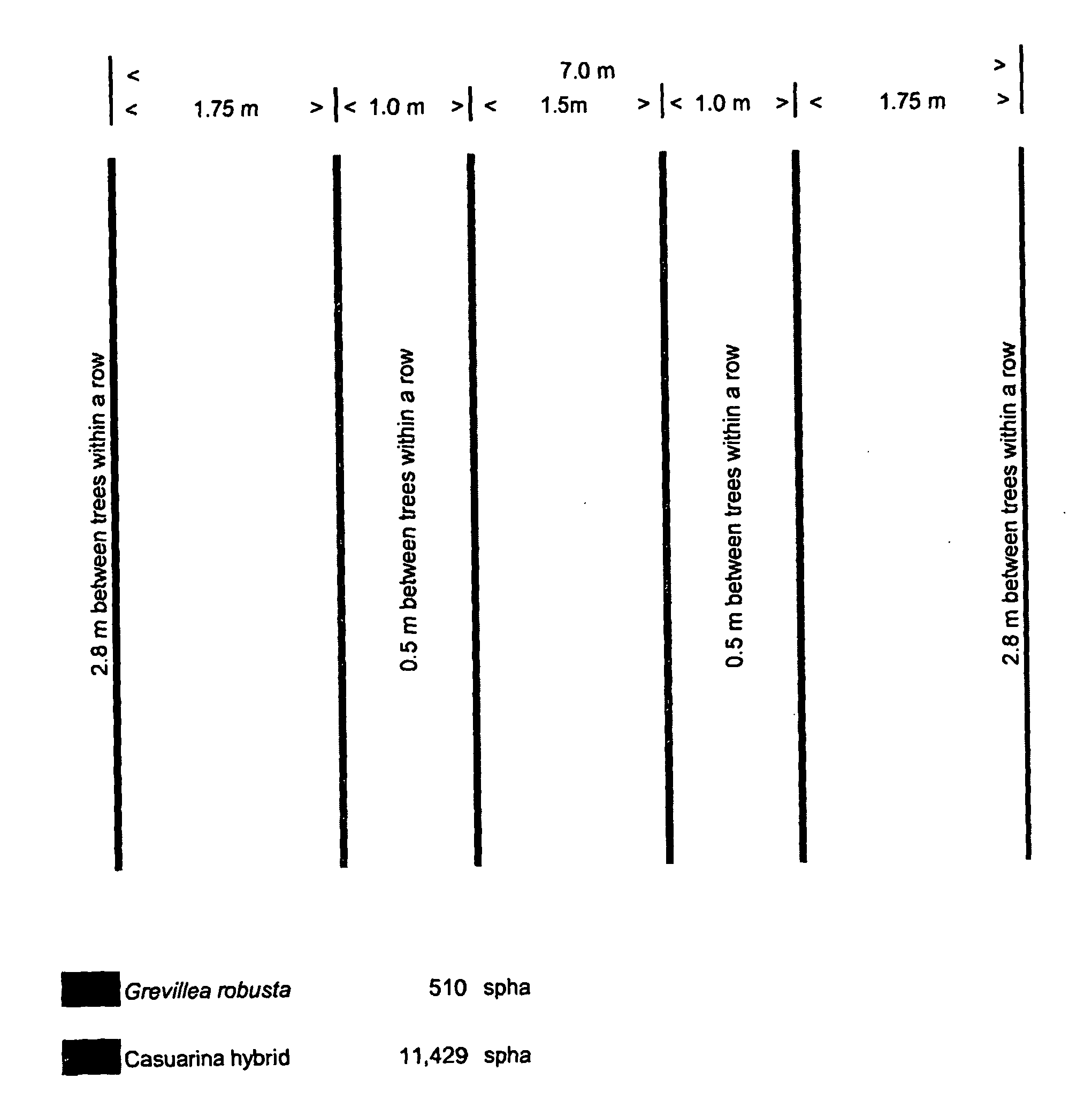Method of cultivating a biomass using the plant genus casuarina
a technology of casuarina and biomass, applied in the field of biomass generation, can solve the problems of suppressing and dying, and achieve the effects of reducing the number of plantations, and increasing the number of species
- Summary
- Abstract
- Description
- Claims
- Application Information
AI Technical Summary
Benefits of technology
Problems solved by technology
Method used
Image
Examples
example 1
Positions of Plant Species
[0108] Hybrids between Casuarina cunninghamiana and Casuarina glauca were planted at approximately 20,000 stems / hectare in 2 beds next to one another, in 1.0 metre wide biomass beds in accordance with FIG. 1. The distance between each biomass bed was approximately 1.5 metres and at the head of each row there was a headrow. Within each of the biomass beds there are two biomass rows, 1.0 m apart with the outside row being 1.75 m from the edge of the bed.
[0109] Adjacent to each of the biomass beds high-value timber species Grevillea robusta and Toona ciliata, were grown. These varieties were planted at a density of 450 stems / hectare and 50 stems / hectare respectively, at approximately 1.75 metres from the beds in accordance with FIG. 1 (see also Table 1).
[0110] After approximately 3 years, the Casuarina plants are harvested by cutting the stems near ground level adjacent to the roots. Rootstock left in the ground is allowed to re-shoot, providing a means for...
example 2
[0116] This Example illustrates a particular use to which biomass of the present invention may be put. Other uses will be recognised by those skilled in the art. In the following particular Example Casuarina biomass was used to prepare composite boards in a 100% Casuarina biomass preparation and in a mixed preparation.
[0117] Freshly harvested Casuarina and Pine logs were manually debarked and then chipped in a 50 hp, 36″ Bruks chipper. The casuarinas bark was difficult to remove as it is more strongly bonded and of a stringy nature. The Casuarina logs were estimated to be in the 3-5 year age range and the Pinus radiata in the 9-12 year range. The chips were vibratory screened to remove over and undersize pieces.
[0118] The Pinus radiata logs were processed separately and mixed with casuarinas to evaluate the suitability of a blend of these two materials. After the logs were debarked, chipped and screened, fibers were produced with separate runs for casuarinas and Pinus radiata, fol...
PUM
 Login to View More
Login to View More Abstract
Description
Claims
Application Information
 Login to View More
Login to View More - R&D
- Intellectual Property
- Life Sciences
- Materials
- Tech Scout
- Unparalleled Data Quality
- Higher Quality Content
- 60% Fewer Hallucinations
Browse by: Latest US Patents, China's latest patents, Technical Efficacy Thesaurus, Application Domain, Technology Topic, Popular Technical Reports.
© 2025 PatSnap. All rights reserved.Legal|Privacy policy|Modern Slavery Act Transparency Statement|Sitemap|About US| Contact US: help@patsnap.com

